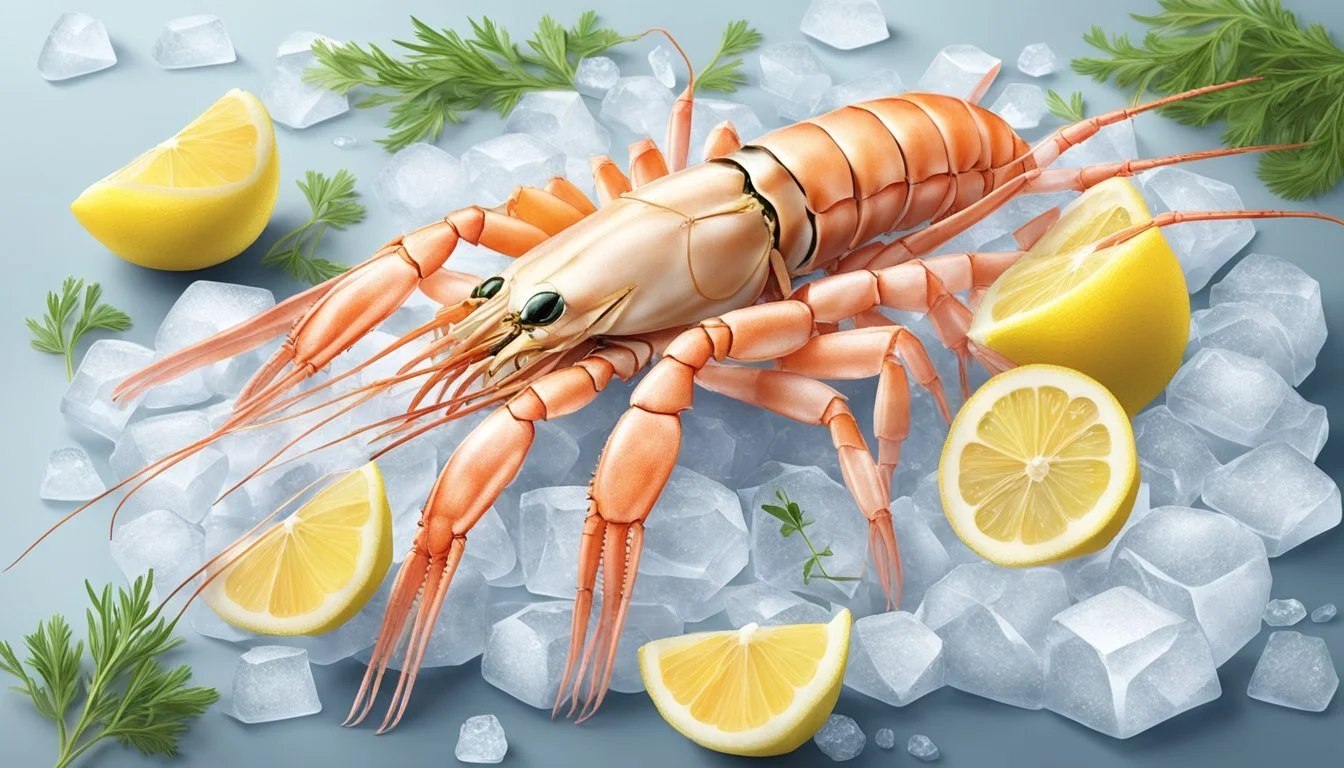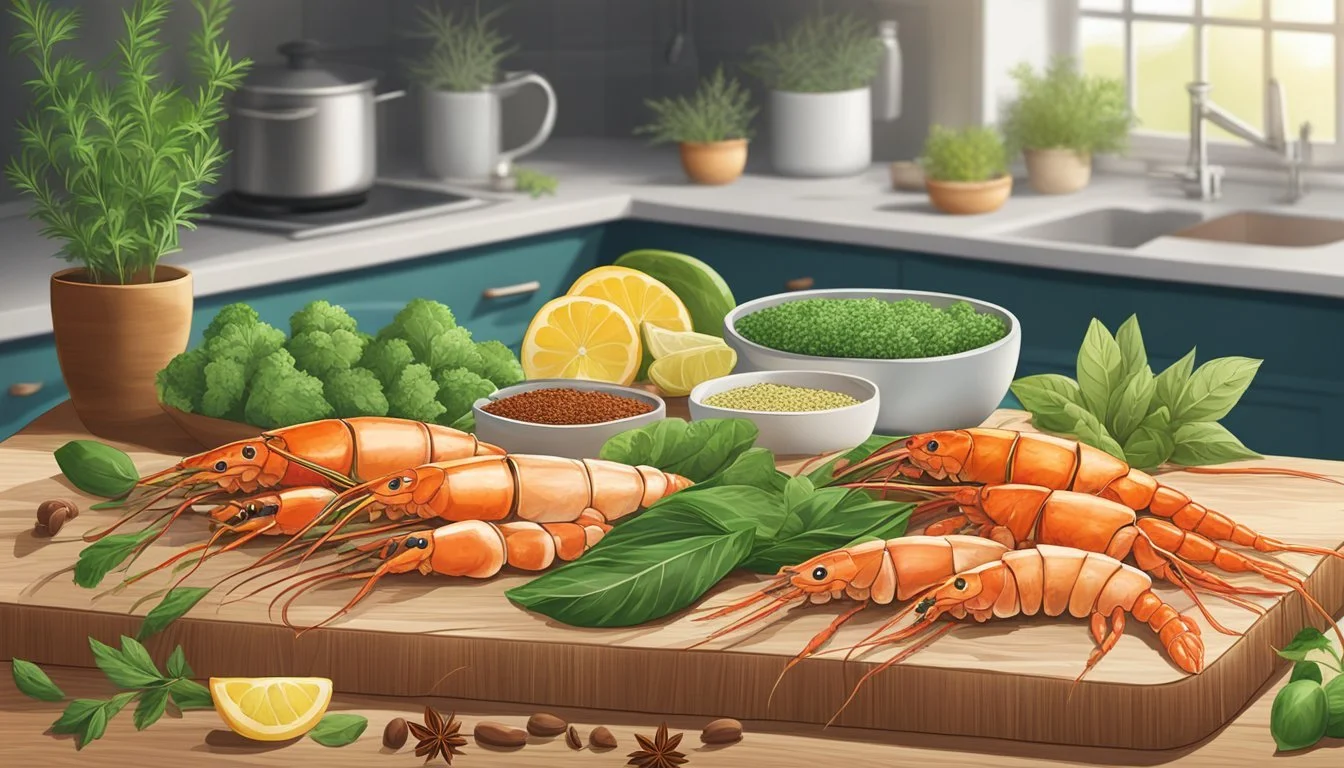Langoustines Substitutes
Best Alternatives for Seafood Dishes
Finding the perfect substitute for langoustines can elevate your seafood dishes with flavors and textures that closely match the original ingredient. Langoustines, also known as Norway lobsters or Dublin Bay prawns, are prized for their delicate, sweet taste and tender meat. Monkfish, crayfish, or king crab can be excellent alternatives when langoustines are unavailable.
For those seeking plant-based options, hearts of palm and tofu offer versatile substitutes with unique textures that can mimic the seafood experience. Each substitute brings its own character to dishes, making them suitable for a wide variety of culinary applications. Seafood enthusiasts often turn to these alternatives to maintain the desired flavor profiles in their recipes.
Exploring these substitutes allows home cooks and professional chefs alike to get creative in the kitchen. By using monkfish, crayfish, and king crab, or plant-based options like hearts of palm and tofu, you can achieve the desired taste and texture without compromising on quality.
Understanding Langoustines
Langoustines, also known as scampi, are a prized seafood owing to their delicate flavor and fine-textured meat. These crustaceans feature prominently in a variety of culinary traditions due to their unique qualities.
Origin and Habitat
Langoustines are primarily found in the northeastern Atlantic Ocean and parts of the Mediterranean Sea. They thrive in cold, deep waters, typically at depths ranging from 20 to 800 meters. These crustaceans prefer sandy and muddy seabeds where they can dig burrows for protection and breeding.
Ireland, Scotland, and Norway are among the top producers of langoustines, with significant fisheries that harvest them sustainably. Their population density and habitat conditions heavily influence their size and quality, making certain regions particularly renowned for their premium langoustines.
Culinary Profile
Langoustines are smaller than lobsters, usually growing up to 10 inches in length. They boast a light orange shell that does not change color when cooked. Their meat is delicate and fine-textured, often described as sweet and succulent.
Common cooking methods for langoustines include boiling, grilling, and air frying. Their flavor can be enhanced with simple seasonings such as lemon, garlic, and butter. Langoustines are highly versatile and can be used in a wide range of dishes, from elegant appetizers to hearty mains. Their culinary appeal lies in their rich, flavor-packed meat and ease of preparation.
Common Langoustine Substitutes
Homemakers and chefs often seek alternatives for langoustines due to their unique flavor and texture. Below are some of the most suitable substitutes with specific characteristics that mirror the qualities of langoustines.
Lobster as a Substitute
Lobsters serve as a prime substitute for langoustines due to their fine-textured, sweet, and tender meat. They work well in dishes where the texture and rich flavor of langoustines are ideal. The quality of the lobster meat ensures that the substitution remains nearly seamless. Use lobster in recipes like bisques, salads, or pasta dishes for an authentic taste.
Shrimp and Prawns Alternatives
Shrimp and prawns are excellent substitutes because of their tender texture and versatile flavor. They are widely available and more cost-effective compared to langoustines. They adapt well to various cooking methods, such as grilling, boiling, or sautéing. This makes them a practical choice for many recipes, including seafood stews, stir-fries, and cocktails.
Crab Varieties
Various crab types, particularly king crab and blue crab, imitate the sweet and succulent flavor of langoustines. The meat quality varies, with king crab being more delicate and blue crab offering a firmer texture. These crustaceans are suitable for dishes where a rich, sweet taste is essential. Options like crab cakes, soups, and salads easily accommodate these varieties.
Additional Crustacean Options
Other crustaceans such as crawfish (crayfish) and scallops also function as effective substitutes. Crawfish have an earthier flavor and a texture that resembles lobster tail, making them suitable for dishes such as Cajun and Creole cuisines. Scallops offer a mild, slightly sweet flavor and a firm texture, perfect for pan-searing, incorporating into pasta, or using in seafood gratins.
Plant-Based and Alternative Substitutes
When looking for plant-based and alternative substitutes for langoustines, there are several excellent options to consider.
Hearts of Palm
Hearts of Palm is a versatile plant-based substitute. It has a texture similar to langoustines and can be seasoned to mimic seafood flavors. This makes it a popular choice for dishes that require a delicate, flaky texture.
Jackfruit
Jackfruit is another plant-based substitute worth considering. Its fibrous texture works well in seafood recipes. Often used in savory dishes, jackfruit can absorb spices and seasonings to create a convincing langoustine alternative.
Tofu
Tofu is a highly adaptable substitute. Available in various forms, it can be marinated with seaweed or other seafood seasonings to produce a flavor reminiscent of langoustines. Tofu’s ability to absorb flavors makes it an excellent choice for those looking to replicate the taste of seafood.
Surimi
Surimi, also known as imitation crab, is a processed seafood product. This substitute is often made from white fish, like pollock, and is shaped and flavored to resemble crustaceans. It’s a practical option for those who prefer a seafood-based alternative.
Other Alternatives
King Crab
King Crab is often used as a substitute for langoustines because of its similar sweet and tender meat. Although not plant-based, it is a great option for those seeking an alternative within the seafood category.
By exploring these substitutes, one can effectively recreate the taste and texture of langoustines in various dishes while catering to different dietary preferences and sustainability concerns.
Preparation Techniques for Substitutes
Various cooking methods and seasoning options can enhance the flavor and texture of langoustine substitutes. Understanding each technique ensures the best results for dishes involving seafood alternatives.
Cooking Methods
Boiling: Boiling is a quick method suitable for substitutes like monkfish and langoustines. Boil in seasoned water with salt and lemon juice for added flavor.
Grilling: Grilling imparts a smoky flavor. Brush substitutes like king crab with olive oil and season with pepper before placing on high heat.
Sauteing: Sauteing is great for dishes needing a rich, buttery taste. Use butter or olive oil, and infuse with garlic and lemon juice.
Baking: Best for large pieces like monkfish. Bake with wine, herbs, and lemon slices to maintain moisture.
Seasoning and Flavor Enhancements
Herbs and Spices: Fresh herbs like parsley and spices such as garlic powder can be used assertively to enhance the natural flavors of seafood substitutes.
Citrus: Lemon and lime juice add brightness and cut through the richness of seafood. Use freshly squeezed lemon for a more vibrant flavor.
Bases: Cream-based sauces work well with monkfish, offering a luxurious texture. For a lighter option, consider a broth or soup base with a splash of white wine.
Pairings: Seafood substitutes pair well with pasta or can be incorporated into soups. A simple pasta with olive oil, garlic, and chunks of sautéed langoustine substitute makes a satisfying meal.
Each method and enhancement technique can be tailored to the specific substitute being used, ensuring an exceptional dining experience.
Nutritional and Dietary Considerations
Considerations of nutritional content and dietary restrictions are essential when choosing langoustine substitutes. Health benefits, cholesterol levels, protein content, and potential allergens should be closely examined.
Health Profiles of Seafood
Langoustines are rich in protein, low in fat, and provide a good source of vitamins and minerals such as vitamin B12, phosphorus, and selenium. Protein content supports muscle building and repair, while vitamins and minerals contribute to overall health.
King crab offers similar nutritional benefits, including high protein and low fat content. It's also rich in omega-3 fatty acids, crucial for heart health.
Monkfish stands out for its firm texture and mild flavor. It contains high levels of protein, vitamins B6 and B12, phosphorus, and selenium. It's also low in fat, making it a healthy alternative.
Shrimp excels in protein and provides essential minerals like iodine, necessary for thyroid function. But, it has higher cholesterol levels compared to other substitutes, important for those monitoring cholesterol intake.
Allergies and Restrictions
Shellfish allergies are common and can pose a severe risk. Langoustines, like other shellfish, can trigger allergic reactions in sensitive individuals. It's crucial for those with shellfish allergies to avoid such substitutions and consider plant-based options.
Dietary restrictions may also impact choices. For instance, pescatarians can opt for monkfish or king crab. Vegetarians and vegans, on the other hand, can rely on plant-based substitutes that mimic seafood texture and flavor.
Kosher and halal dietary laws also play a role. Seafood alternatives used as substitutes must meet the dietary regulations specific to these practices, ensuring they align with religious guidelines.
Economic and Environmental Impacts
Understanding the economic influence and environmental ramifications of langoustine substitutes provides insights into cost factors, market challenges, and ecological sustainability. Key aspects include market dynamics and practices aimed at minimizing environmental harm.
Market Factors
The market for langoustine substitutes is shaped by several factors, primarily cost and supply and demand dynamics. Due to the popularity of langoustines, economics drives the need for affordable alternatives. Lobster substitutes such as fish, tofu, and surimi are often more budget-friendly, meeting consumer demand for cost-effective options.
Price fluctuations can arise from seasonal availability, regulatory policies, and fishing quotas. The increased demand for these substitutes reflects their growing role in the global market. Supply chain efficiency and resource allocation further impact market stability, influencing the affordability and availability of these alternatives.
Sustainability and Ecology
Sustainability plays a critical role in the development and adoption of langoustine substitutes. Concerns about overfishing and environmental impact necessitate the use of responsibly sourced seafood and eco-friendly practices. Sustainable fishing methods help mitigate damage to marine ecosystems, preserving biodiversity.
Efforts are made to optimize feed utilization and reduce waste in langoustine cultivation. Alternatives like plant-based substitutes also offer eco-friendly options, reducing the overall environmental footprint. Managing water quality and minimizing habitat destruction are central to sustainable practices, ensuring the health of marine species and their environments.
Recipes and Culinary Applications
Langoustines can be versatile in the kitchen. They are popular in both main dishes and appetizers, adding unique flavor and texture to a variety of recipes.
Main Dishes
Langoustino Mac and Cheese
Langoustino tails can elevate a basic mac and cheese dish. After preparing your favorite creamy cheese sauce with sharp cheddar and Gruyère, stir in cooked pasta and langoustino tails. Bake until the top is golden and bubbly for a creamy, seafood-infused macaroni.
Langoustino Étouffée
A classic from Creole cuisine, étouffée with langoustino involves making a rich roux base, followed by the addition of bell peppers, onions, and celery. Add the langoustino tails and simmer, then serve over a bed of fluffy white rice.
Langoustino Ceviche
For a fresh twist, langoustino ceviche combines diced langostino tails with lime juice, chopped tomatoes, onions, cilantro, and jalapenos. Chill and marinate until the flavors meld for a refreshing seafood dish.
Appetizers and Sides
Langoustino Lobster Rolls
Substitute langoustino tails for lobster in traditional lobster rolls. Mix chopped langoustino with mayonnaise, lemon juice, and finely chopped celery. Stuff the mixture into buttered and toasted split-top rolls for a delightful appetizer.
Langostino Salad
A simple and refreshing langostino salad requires mixing langostino tails with crisp lettuce, avocado, tomato, and a light vinaigrette dressing. It’s a great side dish or light meal on its own.
Baked Langostino Appetizer
Create a quick and easy langostino appetizer by mixing langostino tails with melted butter, garlic, and Old Bay seasoning. Place the mixture into bite-sized rolls and bake until golden. This straightforward recipe makes a tasty finger food for gatherings.








